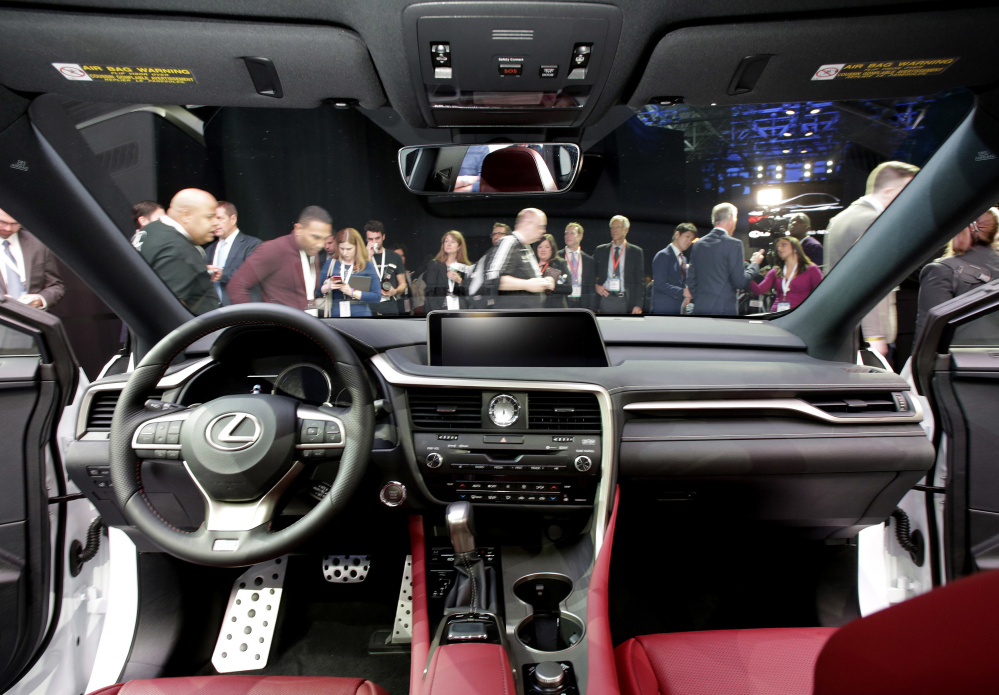Toyota and its luxury brand Lexus rushed to fix a software bug Wednesday that had caused a malfunction in vehicles’ GPS, climate control and “infotainment,” or front console radio systems. It disabled the backup camera and hands-free phone functions as well.
Errant data broadcast Tuesday by the company’s traffic and weather service confounded vehicles’ Enform infotainment system installed in 2014, 2015 and 2016 Lexus vehicles and the 2016 Toyota Land Cruiser, the company said. The data made the subscription-based Enform system continuously reboot itself, rendering it unusable and drawing the ire of many a driver.
Lexus’s social media accounts were flooded with complaints through Wednesday morning, and by 9 a.m., the company told customers to stand by for a momentary fix. Later in the afternoon, it apologized for any inconvenience to customers and offered a fix for the bug.
Owners should force a reset of their vehicle’s computer by disconnecting its 12-volt battery for at least five minutes, the company said. Owners can also bring their vehicles to a Lexus dealer to reset their system.
The company halted the offending data stream overnight, but did not anticipate lingering problems in its vehicles. Lexus said it is still determining how many vehicles the bug affected.
The same way smartphone or software companies remotely update their products, car companies are increasingly doing the same to fix operating system glitches and even update road maps and car-friendly mobile applications.
That’s because cars are increasingly becoming giant rolling computers, capable of doing an untold number of tasks while getting from point A to point B. Consider the Enform service, which includes smartphone and app connectivity, SiriusXM satellite radio, traffic and weather updates and Bluetooth connectivity.
A new car might have 100 million lines of code, according to a report by research and accounting firm Stout Risius Ross. The more luxurious the car, the more interconnected its technological components may be.
Over-the-air updates are advantageous because instead of asking drivers to return their vehicles to dealerships for quick technological tweaks, carmakers route software updates remotely. A 2015 report from research firm IHS Automotive predicted carmakers would save $35 billion in labor and parts by 2022 in over-the-air software updates.
Every now and then, a faulty update or bad data may cause electronics to go on the fritz. On Wednesday, it was a luxury car brand, the same one Consumer Report’s annual auto survey found most reliable in 2015.
Send questions/comments to the editors.



Success. Please wait for the page to reload. If the page does not reload within 5 seconds, please refresh the page.
Enter your email and password to access comments.
Hi, to comment on stories you must . This profile is in addition to your subscription and website login.
Already have a commenting profile? .
Invalid username/password.
Please check your email to confirm and complete your registration.
Only subscribers are eligible to post comments. Please subscribe or login first for digital access. Here’s why.
Use the form below to reset your password. When you've submitted your account email, we will send an email with a reset code.